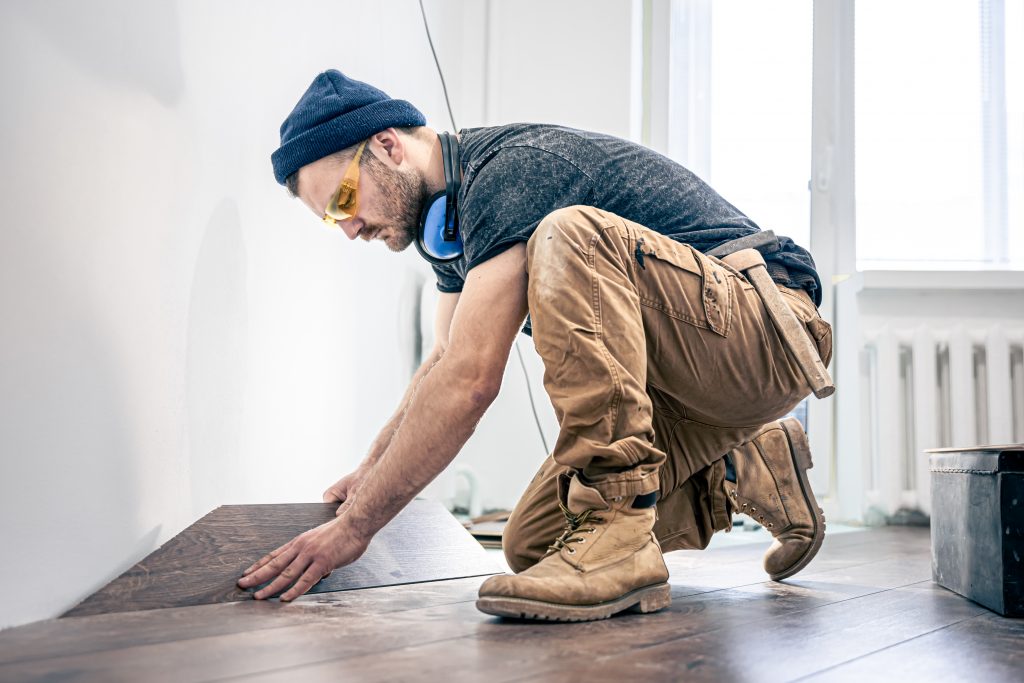PORADNIK
Underlay for uneven floors – which is the best?
Ceramin

Laying the flooring on a smooth and even surface is a pleasure for fitters, but such conditions are not always available. If the floor is uneven, it must first be smoothed with a suitable underlay. For this purpose, many people choose a screed, which is not always a good solution. Screed involves additional costs that can significantly exceed the assumed budget. It mainly works well in situations where the unevenness is very visible and there is no other way to level the surface. However, with minimal unevenness, this step can be skipped and thus reduce additional costs. In order to do this, it is enough to use a suitably selected underlay. Its choice must be well thought out, as its primary task is to even out and stabilise the surface. If the unevenness of the floor is minimal, it can be levelled using an extruded polystyrene underlay. This is an underlay for the flooring, the thickness of which makes that differences in height in the floor are levelled out.
The floor is constantly working under the influence of changes in humidity and ambient temperature. As a result, the fibres may shrink or expand slightly. This may lead to air entering the gaps and cause micro-damage. In order to avoid this situation, choose a high-quality underlay for the flooring. An uneven floor makes it impossible to install tiles, which is why it must first be levelled correctly in order for us to be able to enjoy an aesthetically finished floor. On the market you can find a large selection of underlays for the flooring, which differ in material, thickness or texture. Meet our favourites!
The underlay with which you want to level the surface should have the right thickness. Thanks to this solution, the bottom layer can be adapted to the existing floor, while maintaining the evenness of the upper surface. In this case, a polystyrene underlay for the flooring for an uneven floor will work, which can be installed in the corridor or in the living room. It is extremely durable, resistant to mechanical damage and weight, so there are no worries that it will deform.
Another frequently used underlay for levelling is a cork underlay, which is perfect for bedroom flooring. In addition to the fact that it will even out minor unevenness, it also has excellent sound insulation. In addition, it is also often chosen for its thermal insulation properties. However, it is not as durable as polystyrene underlay, as it deforms quickly. We recommend not to lay it in places that are heavily used, such as the living room or kitchen. What is more, an underlay made of cork or quartz mat will work well with underfloor heating. In addition to transferring the heat to the flooring without major losses, such underlay will also soundproof the floor, thus affecting the comfort of use.
If you want to lay the flooring on an uneven floor, it is important to level it beforehand. A quick way of levelling the surface is to use a PE foam, which is light and will not put extra strain on the whole structure. The polyethylene underlay has thermal insulation properties and dampens sound perfectly. What is more, the foam is also water-resistant, which is why fitters often choose it in the bathroom or kitchen.
There are various types of underlay for flooring available on the market, but due to the parameters, not each of them will work if you want to create a protective layer and lay an underlay for flooring on an uneven floor at the same time. There are underlays that cannot be used in rooms that are exposed to moisture and contact with water. It is worth remembering that sometimes even the thickest underlay is not able to even out large defects. Therefore, before making a final decision, it is important to consider which type of underlay will work best and whether there is a need to additionally level the surface with a screed.
The best underlay for flooring with underfloor heating is one with the lowest possible thermal resistance, so that the efficiency of the heating will be at the highest possible level. Underlays that allow the most efficient use of heat with underfloor heating are distinguished by a thermal resistance of less than 0.01 m2K/W. There are underlays that are suitably adapted to underfloor heating and additionally increase the efficiency of the heating. The use of high-quality underlays is a professional protection of the floor, its levelling and a chance to save money. The quality of the result depends to a large extent on the underlay. Lower class underlays significantly reduce the floor’s resistance to impact and vibrations, and thus the acoustics of the entire room deteriorates.
Water-resistant flooring is very popular among those deciding on the flooring for the kitchen or bathroom. The water resistance greatly affects its lifespan and appearance. In rooms where the floor is exposed to water, it is worth choosing water-resistant laminate flooring, which prevents deformation, swelling and the formation of gaps between the planks. In addition, water-resistant laminate flooring is easy to install and very difficult to distinguish from wooden boards. The underlay for the flooring in this case is also important, as it should be resistant to mechanical damage and moisture. Its thickness is also important, as up to 4 millimetres of unevenness in the substrate can be levelled out with the right underlay.
The use of underlays is a good way of ensuring the comfort of use and the subsequent durability of the flooring. With an underlay you can repair small unevenness and thus save on additional costs connected with screed. Underlays have many functions, which is why they are important when finishing the floor and have a significant impact on the durability and aesthetic appearance of the entire floor.